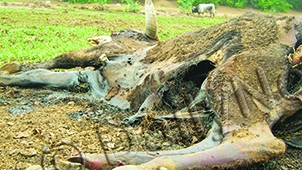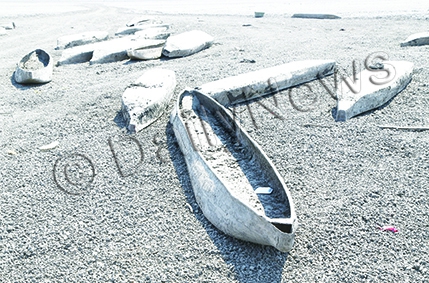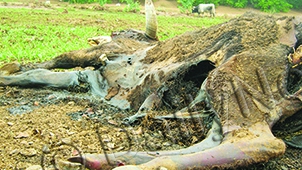Severe drought threatens Southern Africa
22 Jul 2024
The Southern Africa region is experiencing climate and food security crisis as the 2023/2024 El Nino phenomena is causing widespread drought conditions that are characterised by a late onset of rains, extended mid-season dry spells, and extreme high temperatures.
In March this year, a month that marks the end of the last lean season, about 18.6 million people were estimated to be in food crisis or worse due to the levels of food insecurity in the region.
El Nino typically results in hotter and drier than usual conditions in Southern Africa, but this season was characterised by record dry conditions in many areas.
Rains, which usually occur in November in most parts of the region, were delayed by as much as 30 days in central areas including south-eastern Angola, northern Botswana, Malawi, southern Mozambique, northern Namibia, north-western South Africa, southern and central Zambia and Zimbabwe.
In many of these areas, the November rainfall was the lowest on record, dating as far back as 1981.
The low November rainfall contributed to reductions in areas planted.
According to the Southern African Development Community (SADC) deputy Executive Secretary for Corporate Affairs at the SADC Secretariat, Dr Judith Kateera, this is the environment which the region is currently experiencing, an environment where there is need to adapt and mitigate the adverse impact of climate change, if the regional developmental agenda is to be realised.
She says issues of climate change, climate adaptation and climate mitigation need to be clearly unpacked and delivered to the populace, to the member states, private sector, and civil society.
Addressing members of the Media during the World Press Freedom Day in Gaborone, Dr Kateera said the same goes to the debate on the protection of the wildlife and livestock that have also been adversely impacted by the El Nino-induced dry conditions.
She says these have brought about considerable deterioration in vegetation conditions across the southern half of the region this season, as well as reduced water availability for livestock and wildlife.
“Many of the areas with poor vegetation conditions are primarily grassland areas where wildlife and livestock is an important livelihood asset,” she says.
Dr Kateera further adds that SADC needs balanced reporting on the challenges and innovative but durable solutions in this regard, because several households will require immediate food assistance at least up until the April 2025 harvest.
“What is more, the number of people requiring food assistance will increase dramatically as we near the regular lean season, as more communities deplete their own production and food prices increase,” she notes.
Dr Kateera says so far, three member states have declared national drought disasters.
In Zambia, over one million hectares have been destroyed out of 2.2 million hecters of maize planted, while in Malawi, 749 000 hactars have been affected out of the 1.7 million hectares of maize planted and Zimbabwe, where the harvest is estimated at 868 000 metric tonnes, leaving a food cereal deficit of 680 000 metric tonnes.
She says over 9 000 drought-related cattle deaths have been reported in the region between October 2023 and February 2024, a period when pasture and water availability should be plentiful.
Dr Kateera states that governments in the region are constrained in their ability to support due to significant economic challenges, including public debt burdens and other social priorities such as the response to the cholera outbreaks.
And as a result, she adds, the region will soon be launching a regional humanitarian appeal for support.
Botswana has not been spared from El Nino, hence government has declared 2022/2023 a severe arable agricultural drought year throughout the country.
The declaration made by the President, Dr Mokgweetsi Masisi, follows consideration of the 2022/23 Drought and Household Food Security Vulnerability Assessment and Analysis Report.
The report highlights that livelihoods of a significant number of rural households have been affected and remain vulnerable, hence, the need for government intervention.
In view of the conditions that prevailed during the 2022/23 season, relief measures, action and assistance will be implemented with immediate effect until June 30, 2025, save for livestock feed subsidies which will end on the January 31, 2025.
Further theMinistry of Finance will pay 40 per cent of the seasonal loans to farmers who received loans from the Citizen Entrepreneurial Development Agency (CEDA) and National Development Bank (NDB) for rain fed arable farmers through the Agricultural Credit Guarantee Scheme (ACGS) facility to supplement the crop failure as was determined at the time of the assessment
As for Ministry of Agriculture the release says provision will be made for 30 per cent livestock (beef cattle, small stock) feed Subsidy for roughage, mineral supplements and botulism vaccine for the entire country with immediate effect until January 31, 2024 while volumes would be capped per beneficiary to promote equitable distribution.
Additionally, provision will be made for a 30 per cent subsidy for non-traditional commodities (dairy, piggery, aquaculture and poultry) for smallholder farmers, with immediate effect until January 31, 2025 with volumes to be capped per beneficiary to promote equitable distribution.ENDS
Source : BOPA
Author : Aubrey Maswabi
Location : GABORONE
Event : Media address
Date : 22 Jul 2024









